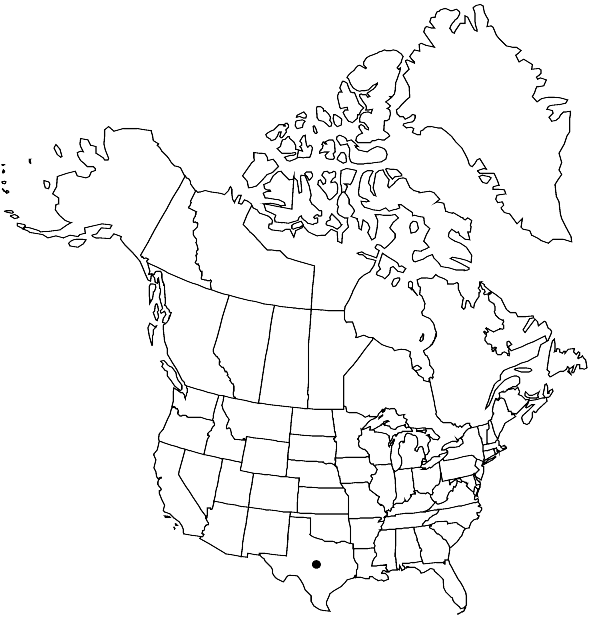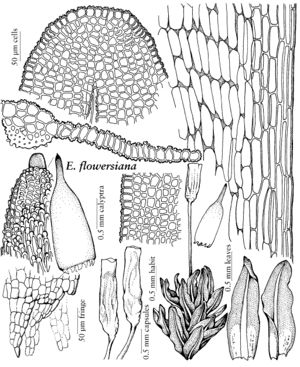Encalypta flowersiana
Bryologist 82: 374. 1979,.
Stems 6–11 mm, central strand small, cells very thin-walled. Leaves broadly oblong to lingulate, 1.5–3 mm; apex muticous, obtuse to rounded; margins plane; costa ending below apex; laminal cells 10–16 µm; basal-cells 30–50 µm, smooth; basal marginal cells differentiated proximally, in 3–5 rows, longer than laminal cells. Specialized asexual reproduction absent. Seta 3–5 mm, reddish-brown. Capsule short-cylindric, 1.5–3 mm, striate to weakly ribbed, yellowish-brown; exothecial cells long-rectangular to linear; peristome absent; operculum 0.5–0.7 mm long. Calyptra 2.5–4 mm, lacerate at base, papillose on rostrum. Spores 35–40 µm, with vermiculate ridges, brown.
Habitat: Calcareous soil over rock, deciduous woodlands
Distribution

Tex., West Indies (Haiti), Central America (Guatemala)
Discussion
Encalypta flowersiana is recognized by its small size, narrow leaves, subpercurrent costa, and distinctly ridged spores. The species is similar to E. mutica and E. texana in the absence of a peristome and leaf awn. The most useful difference is spore ornamentation (see the discussions with those species). Currently, E. flowersiana is known in the flora area only from the Chisos Mountains of western Texas, but its small size and the rugged terrain of its habitat may mask a broader distribution in the mountains of the southwestern United States and northern Mexico.
Selected References
None.
